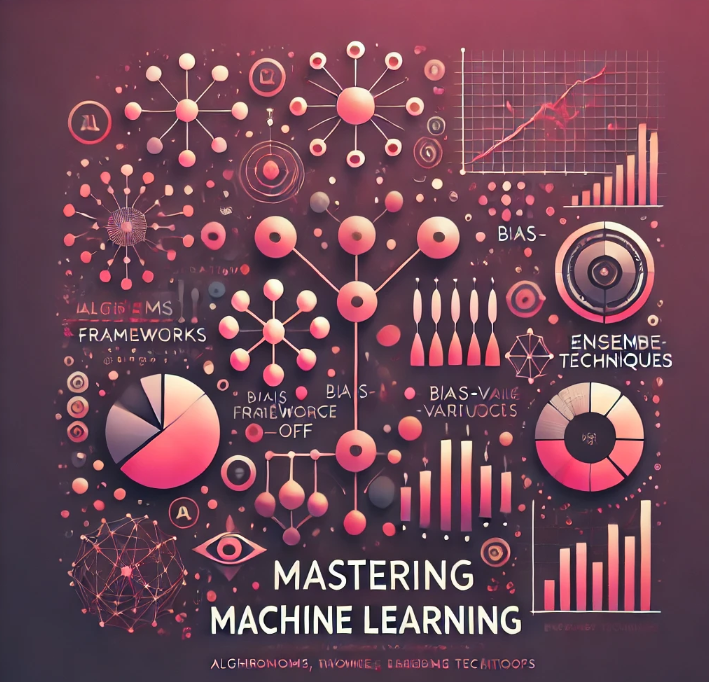Medium
2M
123

Image Credit: Medium
Mastering Machine Learning: Algorithms, Frameworks, Bias-Variance Trade-Off, and Ensemble…
- Linear Regression: Used for predicting continuous values.
- Logistic Regression: Used for binary classification problems. But it can indeed be extended to handle multi-class classification problems.
- Decision Trees: Useful for both classification and regression tasks.
- Random Forest: An ensemble method that improves the accuracy of decision trees.
- Support Vector Machines (SVM): Effective for high-dimensional spaces (Datasets with many features) and classification tasks. This ability to handle many features makes SVMs particularly useful for tasks like text classification and image recognition, where the number of features can be very large.
- K-Nearest Neighbors (KNN): A simple, instance-based learning algorithm for classification and regression.
- K-Means Clustering: Used for partitioning data into distinct clusters.
- Association Rules: Used for discovering interesting relationships between variables in large databases.
- Q-Learning: A model-free reinforcement learning algorithm.
- Deep Q-Networks (DQN): Combines Q-learning with deep neural networks.
- Policy Gradient Methods: Used for optimizing policies directly.
- Scikit-Learn: A simple and efficient tool for data mining and data analysis, built on NumPy, SciPy, and matplotlib. It’s great for classical machine learning algorithms and is very user-friendly.
- Keras: An open-source software library that provides a Python interface for artificial neural networks.
- MXNet: A deep learning framework designed for both efficiency and flexibility.
- High Variance: A model with high variance pays too much attention to the training data, capturing noise along with the underlying patterns. This often leads to overfitting.
- Low Variance: A model with low variance makes similar predictions regardless of the training data subset. While this reduces the risk of overfitting, it can sometimes lead to underfitting if the model is too simple to capture the underlying patterns in the data.
- Bias refers to the error introduced by approximating a real-world problem, which may be complex, by a simplified model.
- High Bias: A model with high bias makes strong assumptions about the data and is often too simple to capture the underlying patterns. This can lead to underfitting.
- Low Bias: A model with low bias makes fewer assumptions about the data and is more flexible in capturing the underlying patterns.
- There’s a tradeoff between bias and variance. Ideally, you want a model with low bias and low variance, but in practice, reducing one often increases the other.
- High Variance comes with Lower Bias, leading to Model Overfitting: High variance models are highly flexible and can capture the noise in the training data, resulting in overfitting.
- Low Variance comes with High Bias, leading to Model Underfitting: High bias models are too simplistic and fail to capture the underlying patterns in the data, resulting in underfitting.
- Introduce new features that might help the model capture more information about the data.
- More data can help the model learn better and reduce bias.
- For certain types of data, like images, you can use data augmentation techniques to artificially increase the size of the training set.
- Feature Transformation: Apply transformations to the features, such as polynomial features, interaction terms, or logarithmic transformations, to capture non-linear relationships.
- Text Data Augmentation: Synonym Replacement, Random Insertion, Random Deletion, Back Translation and Sentence Shuffling.
- Audio Data Augmentation: Time Shifting, Pitch Shifting, Speed Variation, Noise Addition, and Volume Adjustment.
- Use ensemble methods like bagging, boosting, or stacking to combine multiple models.
- Use techniques like grid search or random search to find the best hyperparameters for your model.
- If you are using regularization techniques like L1 (Lasso) or L2 (Ridge), try reducing the regularization strength.
- Regularization is a technique used in machine learning to prevent overfitting by adding a penalty to the model’s complexity.
- Remove irrelevant or redundant features to reduce the complexity of the model.
- Gathering more data can help the model learn better and reduce overfitting.
- Early stopping is a regularization method that halts training when the validation performance begins to decline.
- Ensemble methods combine multiple models to improve prediction accuracy and reduce high variance by averaging their outputs.
Read Full Article
7 Likes
For uninterrupted reading, download the app